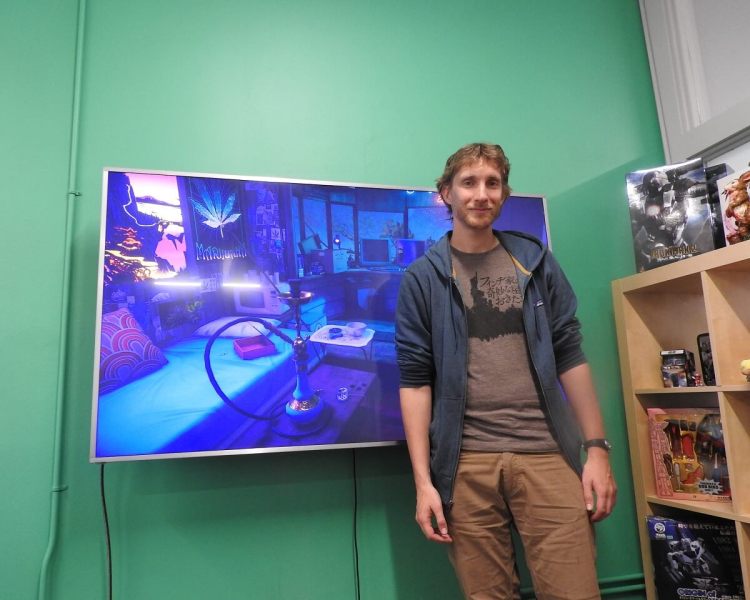Ian Dallas, the creative director at game studio Giant Sparrow, has a knack for describing his games in a way that makes you want to play them. His company’s next title is What Remains of Edith Finch, a collection of stories about 13 people on their last day of living.
I saw a preview this week. Edith Finch is a haunting, melancholy title that’s more like a ghost story than horror. It could be tough for Santa Monica, Calif.-based Giant Sparrow, which previously made The Unfinished Swan, and its publisher Annapurna Interactive to get people to try such a disturbing game.
Please check out our GamesBeat Summit 2017 event coming May 1-2 on the inspiration between science fiction, tech, and games. Use Deantak code for 20 percent off.
But Dallas hopes that the novelty of the experience and the depth of the feeling in the game will draw people into it. I talked to Dallas about this in an interview.
Here’s an edited transcript of our conversation.
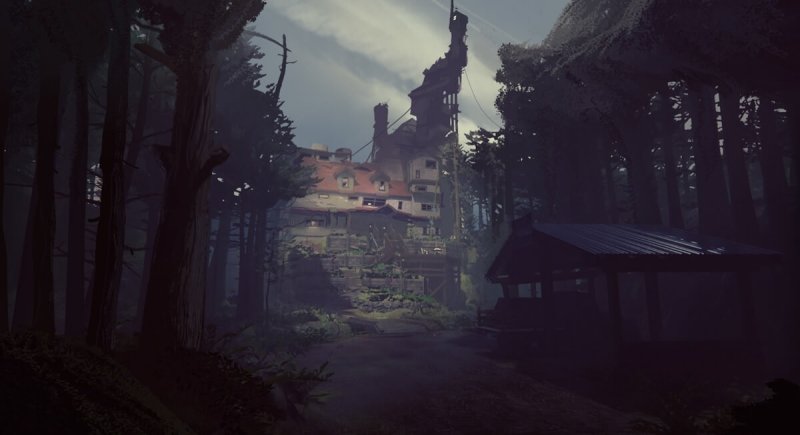
Above: The crazy house in What Remains of Edith Finch.
GamesBeat: What would be the one- or two-line description of what happens in the game?
Ian Dallas: It’s a collection of short stories about a cursed family in Washington state. That’s as short as we’ve gotten it.
GamesBeat: What would you say the title means?
Dallas: What remains of Edith, at the beginning of the game, is a journal. She’s no longer around at that point. It’s just a journal she’s left that describes her experience in coming back to the house. And in the same way that, for all of the family members—what’s left of them is these stories. Physically there are the bedrooms and whatever else, but as far as the player’s concerned, it’s the stories that have lived on.
And each story ends with that family member’s death. It’s meant to provide some continuity, and also to in some way free the player from being concerned about dying. Usually not dying would be the main focus of a player’s attention. Here we want you to just put that aside for a while and enjoy the time you have.
GamesBeat: Is Edith present throughout the whole game, then?
Dallas: Right. You go into these stories because Edith finds them, and then when come out, Edith will have comments about it. She’s remembering her time growing up in the house. She wasn’t allowed inside any of these bedrooms. They were sealed up when she was a child. She’s learning all these stories for the first time, so she has something to say about them. She provides a touchstone for players to come back to and think about the broader implications of what’s going on. Ultimately it’s her story, but finding a balance of how much player sympathy to put into the stories versus Edith herself has been challenging. It’s almost impossible to predict or tune until everything is pretty close to the end.
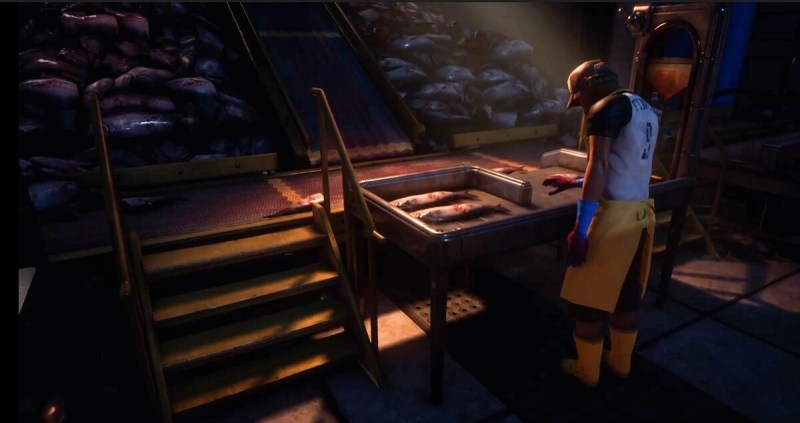
Above: Lewis Finch at the fish cannery.
GamesBeat: Who is in this demo?
Dallas: Lewis is Edith’s brother. The last time you played, I think it was Molly. That’s the first generation.
GamesBeat: So this is closer to the end of the game?
Dallas: As you go through the game, you’re moving up through the layers of the house. They seal up the bedrooms any time someone dies, so the family starts running out of room. Each generation builds on to it. Now, closer to the present day, you’re at the top, as far as the family has built up in the house. You’re almost at the end. The bedrooms also get a bit smaller as they run out of room.
GamesBeat: What’s the process been like, getting this one finished?
Dallas: A very different kettle of fish from the last time around. It’s daunting to have so many different stories, each with their own unique design and technical challenges. We hit an interesting point about eight months ago, where things were working well enough that we could have people play through the whole game. It felt kind of real.
But we found out that we’d done such a good job in the first half of the game, leading people along and making people feel like they just magically discovered all these things, that players stopped trying to find anything. They just trusted that the game would—thing would just magically appear. Then we had to do that same magical design process for the second half of the game.
It’s that balance – making it feel like players are discovering these things, but not getting lost. The house is designed to be overwhelming. Still, we want players to not end up chasing their own tails. Trying to balance all those things—it’s the usual, “Oh, you thought this would work? No, no, no.” And then a lot of playtesting.
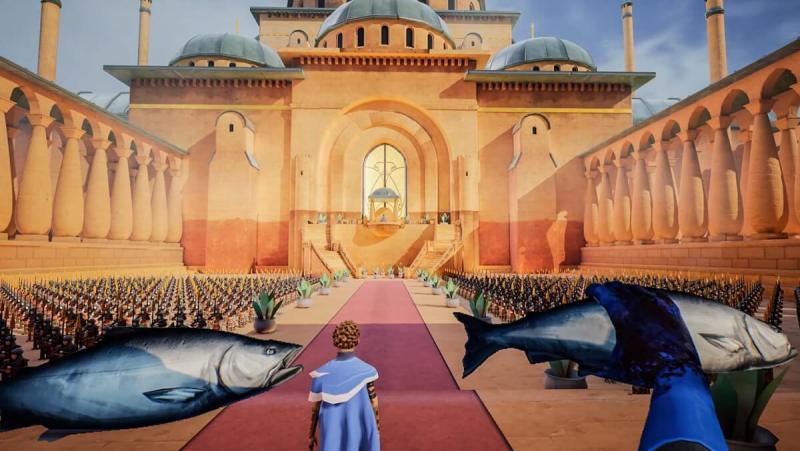
Above: The coronation level in What Remains of Edith Finch.
GamesBeat: Are you spending a lot of time in the house, or do you go outside a lot?
Dallas: Most of it is inside the house as yet. There’s a bit of walking around when you walk up to it, and then midway through the game, as a breather, there’s a sequence that’s outside. But then Edith is probably maybe 40 percent of the game, and the stories of the relatives are about 60 percent, roughly. As Edith you explore the house, and then each bedroom has its story. It’s a bit less than 50-50.
GamesBeat: What do you wind up with as far as what you’d call levels?
Dallas: There are 13 family members. Each of those has their own story, and then Edith is the narrator. So you could say there are 12 stories plus Edith. The stories range quite a bit. Some of them are about 20 minutes, the longest ones, and some of them are as short as three minutes. It depends on what feels right for each story.
GamesBeat: So it ends up being five or six hours?
Dallas: Oh, we’re not allowed to say. That’s one of the things we get very touchy about. But the hope is “not too long.” It works best when it’s this accelerating spiral. All of it has a momentum that carries it through.
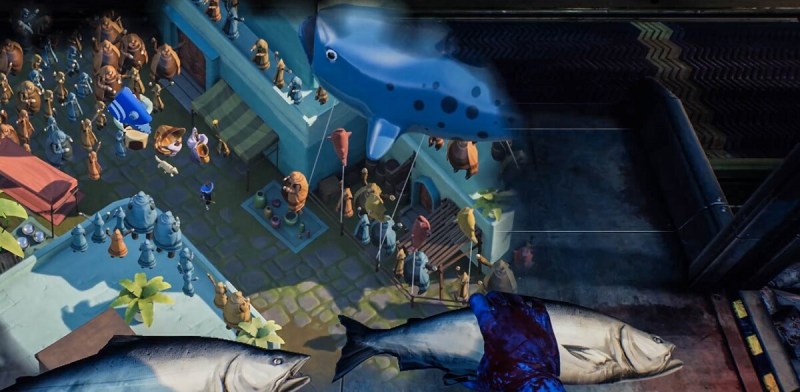
Above: Inside the mind of Lewis Finch.
GamesBeat: Would you say it’s a very melancholy game?
Dallas: I would say there’s an ominous tone to things. But the stories themselves—our intent is to have a light touch with them. Anything that players perceive as dark or dreadful or whatever is hopefully coming from themselves. We try to set the scene like, “Yes, all these people are dead, but that being the case, let’s enjoy the time we have with them.” We find that players bring enough of their own darkness that we don’t have to supply any.
GamesBeat: So you wouldn’t say it’s a horror story.
Dallas: No. It’s a hard question, though. It depends on who’s asking. It’s definitely closer to a ghost story. I’ve come to think of horror as something that intends to scare you, and that’s not our intent. It certainly could be described as a horror game, but it’s more of—it’s a collection of stories about things that are somewhat dark, but it’s not, first and foremost, trying to be shocking or scary.
GamesBeat: What do you think pulls the player along into each story?
Dallas: It depends on the player. But I’d say that never knowing what’s about to happen is the carrot that I’m personally focused on the most. Having each of these stories be so different from the one that came before it, so players are eager to find out what’s in the next room. There’s also this thread of Edith trying to figure out what has happened to everyone. But we try to signal to the player that this is not the kind of story that is going to hinge on a dramatic reveal. “Oh, we’re all vampires!” or whatever. It’s more like, “Oh, these horrible things happened. How did my family deal with it in the past, and how should I deal with it?” That’s the mystery there. It’s not something predicated on a long-lost brother or a raspberry birthmark or anything. It’s just her coming to terms with these things.
It’s a combination of Edith’s own journey providing the spine of it, and then the stories themselves hopefully being interesting on their own. There’s also the way these things weave together, seeing characters reappear, and certain locations you’ll see in different time periods.
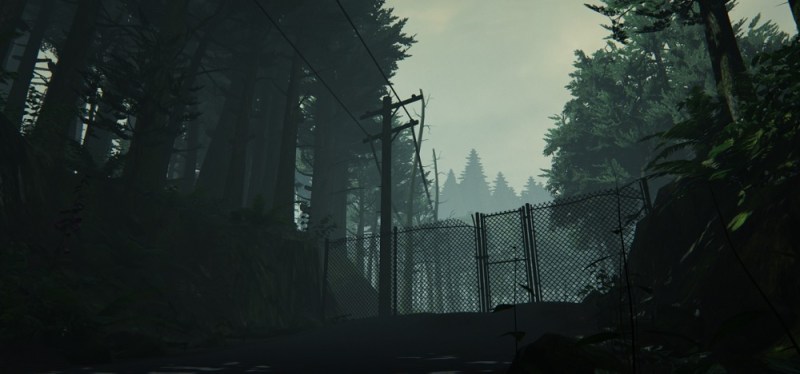
Above: What Remains of Edith Finch.
GamesBeat: A lot of them look very young.
Dallas: That’s something we found after we did a lot of prototypes. The younger people tended to have more interesting and more playable death experiences. The kinds of things they were doing, like flying a kite or playing on the swing set, were things that fit the game better.
GamesBeat: And when does it come out?
Dallas: April 25. It’ll be out on PC and PS4.
GamesBeat: How old is Louis during what we’re seeing?
Dallas: He’s 23. The dates have changed a bit, but I’m pretty sure that’s what we settled on.
GamesBeat: It’s an interesting mechanic, doing two things at once. And the pacing runs on that drumbeat.
Dallas: Right. We’re trying to evoke monotony without the experience becoming too monotonous. The guillotine provides a kind of monotonous accompaniment, but also a relentless push forward.
GamesBeat: To what degree would you say this story is representative of the game?
Dallas: It’s at the far edge of what the game does, in terms of the size and then the number of different moments within it. But it’s emblematic of the kind of experiences that we’re trying to create: things that people have never seen before, and that are themselves constantly evolving. We’re trying to keep players constantly on their toes, always feeling like the first couple of minutes of the game. You’re always open to what’s about to happen.
A lot of games, you feel like that in the first couple minutes, and then you switch over to just trying to maximize or optimize or get more proficient at this thing. We’re trying to make a game where it’s always at that place where it’s unknown. Ultimately all these stories are about the unknown on some level.
We’re trying to make the experiences reflect that. This is a bit of an outlier in terms of the level of pomp, maybe? Because we’re making so many of these stories, the others tend to be a bit simpler than this one. But it’s a good demo for players that want to know what the game is meant to feel like.
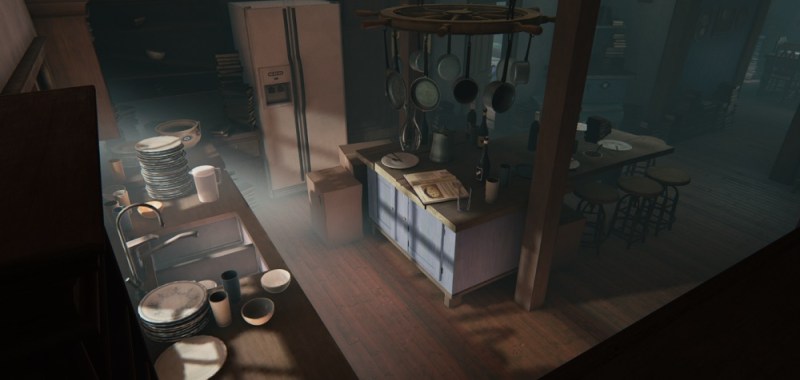
Above: What Remains of Edith Finch.
GamesBeat: Do we know why all these bad things are happening to the family?
Dallas: No. That’s part of what she’s coming back to find out. The initial inciting incident is that her mother, Edith’s mother, has just died. That leaves her as the last living Finch family member. She’s coming back to try to figure out what happened.
When she grew up in the house, her mother deliberately tried to keep these stories from her. Her mom’s perspective—most of Edith’s story in the house is about the conflict between Edith’s mother and Edith’s great-grandmother. Edith’s mother wanted to forget about what happened, and Edith’s great-grandmother wanted to celebrate and remember the family. So Edith grew up not really knowing any of these stories, and now she’s coming back to find them and to reconcile herself. Is it better to remember these stories, or better to put them behind her?
